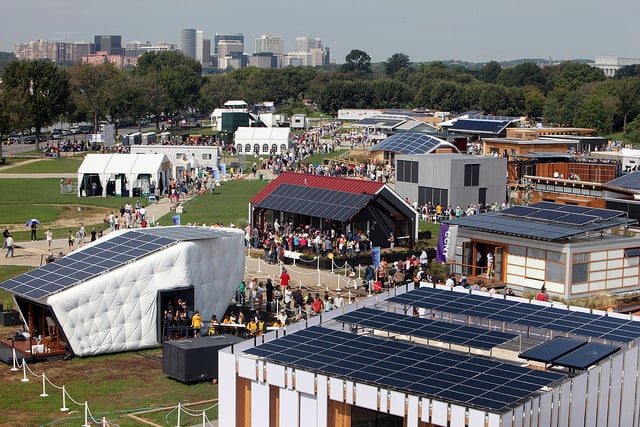Solar Decathlon: Spotlighting American Innovation
Wednesday, Aug 28 2013

Originally published on Renewable Energy World
When the U.S. Department of Energy held its first Solar Decathlon on the National Mall in 2002, Americans were growing nervous about energy issues for the first time in decades. Natural gas prices had skyrocketed, California had just recovered from rolling blackouts, and the events of 9/11 and our continued dependence on foreign energy sources were at the foreground in our minds.
Meanwhile, as America continued its drop in world rankings in the math and sciences, demand for STEM-skilled (science, technology, engineering and math) workers increased to the point that growth in STEM jobs was three times faster than other positions. While we still lag behind many Asian and European countries in STEM areas, there has been a growing movement in educational policy and curriculum planning to advance grade school- and college-level studies in the STEM fields in order to improve U.S. competitiveness in these areas.
Energy and education met in that well-timed Solar Decathlon in 2002 in Washington, D.C. that culminated in over a dozen solar powered homes temporarily constructed in front of the Capitol and toured by thousands of visitors from across the globe. Made possible through the initiative of Dr. Richard King and the Office of Energy Efficiency and Renewable Energy Solar Technology Program, this new, experimental program stepped outside the traditional laboratory work of the DOE and attracted college students from diverse academic fields – architecture, engineering, sciences, communications, interior design and others – to collaborate on creating the most cost-effective, attractive, and energy-efficient solar-powered home.
The Decathlon used an “If you build it, they will come” strategy to bring solar energy to the forefront as a viable solution to our energy and education challenges: if you train and encourage students to be innovative thinkers, those students will in turn educate the public about affordable renewable energy systems available today. The program nurtures innovation while driving product awareness, which encourages growth in new markets; all the while, encouraging STEM skills in our students that require creative integration with other fields. The physics major had to work hand-in-hand with the landscaper to make the home function as a system.
The prosperity and reach of the Solar Decathlon over the past decade (there are now Solar Decathlon programs in China and Europe), as well as broader programs like the SunShot Initiative, which has funded more than 150 solar technology projects since its 2011 inception, are working to leverage private dollars and drive innovation. Leaving its birthplace of Washington for the first time, the biennial Solar Decathlon kicks off in California this year with a bevy of collegiate teams from around the nation – and from around the world – showcasing how solar’s role in diversifying the nation’s energy mix is alive and growing.
With 120,000 Americans working at more than 5,600 companies, the U.S. solar industry is helping power our homes and businesses; and from the new technologies and designs showcased at the Solar Decathlon, it’s clear that the U.S. is a global competitor – both in education and solar deployment.
Ask any hard-working student at the Solar Decathlon in Orange County about the way she and her team designed their solar home for this increasingly competitive contest, and between the talk of louvers, panels, LEDs, daylighting, and water treatment, you’ll hear one overall theme: it’s built to win. And that’s good news for all of us.